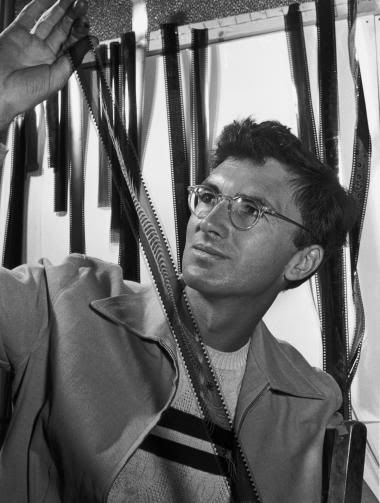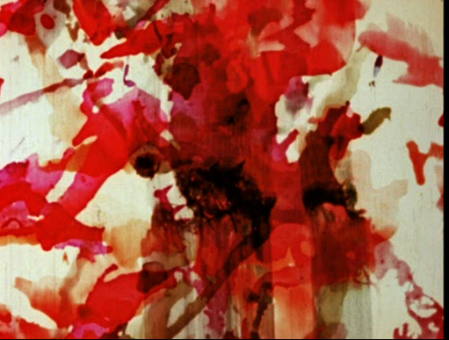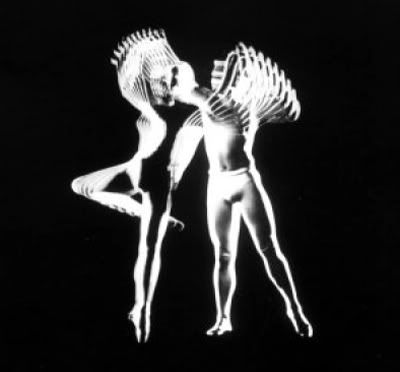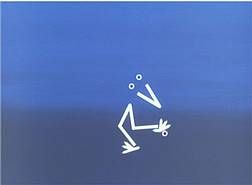 |
| FIG.1: Norman McLaren |
Norman McClaren(1914-1987) is a Canadian born animator well know for his work in the National Film Board of Canada(NFB). NFB is a company worldwide recognised for its artistic excellence and innovation where artists are challenged to take artistic and technical risks and create difficult produced cultural content. Among those artists McClaren was an innovator who pushed the boundaries of traditional animation. "He was innovator supreme; mime, motion and imagery a way of life. Not in similar fashion to Walt Disney who concentrated on the perfection of the eel-animated entertainment film, instead, McLaren returned to basics with a virgin strip of 35mm movie stock, exploring fresh possibilities with pen, Indian ink, razor blade, sewing needle, scraper, transparent inks on a sponge, roller or coarse woven cloth and a variety of stop-motion photographic effects, extending the boundaries of audio, visual and sensory perception." (The Animator Mag.1987)
MacLaren's films might be considered as filmic adventures in-between, both in the sense of intervening between frames in unexpected way but as treating the film strip as part of the animation. His early experiments in animation included actually scratching and painting the film stock itself.Part of his work consist of abstract drawings and ink splatters being transformed, multiplied, and divided, creating an illusion of moving forms followed by rhythmic, catchy jazz music. The different shapes and forms were combined in a way that made the impression of an animation which was made to match the music. McLaren was highly inspired by dancing movements so his purpose in his abstract animations was to make the frames move elegantly when the music was calm and rapidly when the music was quicker. Himself mentioned that:“Animation is not the art of drawings-that-move, but rather the art of movements-that-are-drawn. What happens between each frame is more important than what happens on each frame.” (McLaren.2005)
 |
| FIG.2: Abstract Animation |
 |
| FIG.3: Abstract Animation |
As mentioned, McClaren considered dancing as a great part of his inspiration. One of his pieces called Pas De Deux (1968)(FIG.4) is a black and white dancing performance transformed by its presentation to yield something that could only exist in film. In this stunning meditation on form and movement, Norman McLaren examines the choreography of ballet by freezing the figures and multiplying them. With careful lighting and by using slow motion McClaren made the figures magically move, with the use of optical printing of key-frame poses creating a dream-like, hypnotic effect.The film is an achievement of a graceful study of movements of light and form, with the screen being continuously with complex and dense images of tremendous beauty. " What MacLaren achieve in Pas De Deux is the transduction of the coupling into the force of individualisation taking form through the quality of movement tracing its future-anteriority.The individualisation is not the taking form of a single individual. It is the essence of movement as the becoming-body of dance." (Manning.2009)
 |
| FIG.4: Pas De Deux |
Another abstract film of his is Le Merle, an animation following the lyrics of a an old French-Canadian folk song. Abstract marks compose and decompose the the recognizable image of a blackbird in response to the lyrics of the song. Simple white cut-outs on pastel backgrounds create an enjoyable animation which somehow makes sense to those who don't even know French by following the transformations of the bird.
 |
| FIG.5: Le Merle |
Bibliography
Schaffer, Bill(2005) At:
http://www.sensesofcinema.com/2005/cteq/norman_mclaren/(accessed on 19/3/2011)
Manning, Erin(2009) Relationscapes. USA: Graphic Composition Inc
List of Illustrations
FIG.1: McLaren At: http://www.atempo.com/products/digitalArchive/success_story_nfb.asp (accessed on 19/3/2011)
FIG.2: Abstract Animation At: http://snoreandguzzle.com/?p=87 (accessed on 19/3/2011)
FIG.3: Abstract Animation At: http://drnorth.wordpress.com/2009/06/25/begone-dull-care-norman-mclaren-randomised/ (accessed on 19/3/2011)
FIG.4: Pas De Deux At:http://www.body-pixel.com/2009/10/08/body-cinema-pas-de-deux-by-norman-mclaren/(accessed on 19/3/2011)
FIG.5: La Merle At: http://www.arsenal-berlin.de/arsenal/programmtext-anzeige/archive/2007/03/article/853/212.html?cHash=e789745ed2 (accessed on 19/3/2011)

No comments:
Post a Comment